news The nation’s top two mobile telcos Telstra and Optus this morning revealed they would start selling a version of Samsung’s popular Galaxy S III handset which will function on their growing 4G networks and come with the Jelly Bean version of Android, as Optus simultaneously launched consumer access to its 4G infrastructure.
The Galaxy S III is already one of this year’s most popular handsets, ranking alongside Apple’s iPhone 4S and HTC’s One series as being among the top smartphones available in Australia. However, it hasn’t previously been able to take advantage of the full speeds available on the 4G infrastructure which Telstra has rolled out around Australia and which Optus has launched in Sydney, Perth and Newcastle.
Telstra said it would launch a 4G version of the Galaxy S III on its network in October, with customers being able to register online to receive more information about its launch. “Our customers have been hanging out for the arrival of the GALAXY S III 4G and we’re thrilled to be able to offer it on Australia’s only national 4G-enabled network,” said Andrew Volard, Director of Telstra Mobile. Telstra will offer the Galaxy S III 4G in both “Titanium Gray” and “Onyx Black” colours.
In a separate statement, Optus said it would open its 4G network to consumers from today, with a Melbourne launch to follow from 15 September this year (business customers already have access to the network in existing locations). Optus customers can pre-order the Galaxy S III from the telco’s website today — but only in the ‘Titanium Gray’ colour. The company will sell the 4G version of the Galaxy S III for a handset repayment cost of $7 per month on a $60 monthly plan, or for no additional handset repayment cost on an $80 plan (see full pricing by clicking here). The plans come with 1.5GB and 2GB of data quota included, and are two year contracts.
Telstra’s 4G network is much more extensive than that of Optus, reaching around 100 locations nationally and some 1,000 mobile phone towers, which the telco plans to extend to around 2,000 over the next year. Telstra already has some 500,000 customers on its 4G network. In comparison, Optus’ 4G network is open in Sydney, Newcastle and Perth from today, although it is planning to launch in Melbourne on 15 September. Optus’ network offers speeds technically faster (up to 60Mbps) than Telstra’s network, which offers speeds up to 35Mbps. However, the full capability of Optus’ network has not been tested on a commercial basis — with the telco not having many customers using it yet.
Vodafone does not have a 4G network in Australia yet (and is consequently not part of this morning’s launch), although it is planning to start constructing 4G infrastructure locally from 2013.
“The Australian market continues to demonstrate a diverse set of consumer needs and we are committed to responding to this with a wide portfolio of products. Following the recent success of the Samsung GALAXY S III, the addition of the 4G powered GALAXY S III Onyx Black and Titanium Gray is part of our ongoing commitment to leading the charge in technology innovation and choice,” said Tyler McGee, Vice President Telecommunications, Samsung Electronics Australia. “The smart and intuitive GALAXY S III 4G takes this to an exciting level through our strong carrier partnerships, with the opportunity to offer this device to Australian consumers that want the fastest network speeds,” he said.
The version of the Galaxy S III announced this morning appears to be largely similar to the existing non-4G Galaxy S III already available in Australia, but with several differences. For example, it comes with 4G support in the 1800MHz band used by Telstra and Optus, as well as the unused 2600MHz band. In addition, it comes with the new 4.1 ‘Jelly Bean’ version of Android recently released, which offers a number of improvements over the previous version, Ice Cream Sandwich, which is generally the version used by handset manufacturers releasing products in Australia.
In its specifications list this morning, Samsung did not disclose what processor the 4G Galaxy S III uses, but Telstra noted the phone featured “the latest quad-core processor technology”. A number of smartphones which have been previously released have received a significantly altered CPU to cater for the 4G chipsets.
Delimiter’s review of the original Galaxy S III concluded:
“As we’ve reported previously, Telstra’s Next G network has been somewhat congested of late in some CBD areas, leading Delimiter to recommend users to switch onto its incredibly fast 4G network. And with Optus launching its own (potentially even faster) 4G network on the same frequency this month, there are ever more reasons daily to upgrade your handset to a 4G model, as hundreds of thousands of Australians have already done. If you don’t, you might regret it in a year. The only 4G smartphone which we currently recommend is HTC’s stellar One XL model.
However, if you don’t need 4G speeds, then the Samsung Galaxy S III is currently the best smartphone in Australia. This is the goods, people — a world-beater in almost every area (software, hardware and so on), that you’ll be happy with for several years to come and will probably pass on to a family member after that point. The hype is justified. And if Samsung brought out a 4G version of the Galaxy S III, we’d strongly consider switching from our HTC One XL to that model. Your move, Apple. Samsung’s stolen your crown. What you gonna do?”
Optus also simultaneously this morning released consumer pricing plans for its 4G USB dongle and Wi-Fi device. For this pricing in full, click here.
opinion/analysis
There are several fascinating aspects to the launch of the 4G Galaxy S III this morning in Australia.
Firstly, it is highly notable that Vodafone is completely absent from this launch, as it doesn’t have a 4G network of any kind (not even the patchwork, incomplete kind that Optus has). As I wrote yesterday, the lack of such a network will leave Vodafone out of major 4G smartphone launches. I was writing yesterday about the Apple iPhone, but the theory applies equally to the 4G Galaxy S III. This new model is probably now the best smartphone available in Australia, in my opinion, and Vodafone doesn’t have a network which will support it. That speaks volumes about the company’s future.
Secondly, I note that Samsung Australia’s media release about the Galaxy S III explicitly fails to mention any detail about its processor. We’ve seen previous models dumbed down in terms of their CPU to accommodate the 4G speeds. What exact processor is the 4G version of the Galaxy S III running? We don’t know yet … but I hope Samsung isn’t silly enough to think that nobody would notice this omission.
Lastly, there is also the fact that Samsung has chosen to give Telstra customers additional options when it comes to colour choice of the Galaxy S III. This means that Samsung recognises that Telstra has far and away the best 4G network in Australia right now, and is giving the big T preference for its products, as it will be able to sell the most handsets through Telstra. Not really a surprise, but this is further indication of Telstra’s increasing dominance over Australia’s mobile phone market.
This morning’s release might as well have been entitled: ‘4G: Telstra is way out in front, Optus is barely hanging on to second place and Vodafone hasn’t even begun the race yet’. Because that’s where the telcos sit in terms of their 4G coverage.
One last thing: Do I personally recommend you rush out and buy a 4G version of the Galaxy S III? Yes, I do, if you’re an Android fan (of course, if you’re a bit cautious, you may want to wait for the first reviews). This smartphone is now likely the top model of any kind in Australia (and will be for some time) and I commend it to you. Read Delimiter’ existing Galaxy S III review to find out why. 4G is the icing on this incredibly tasty cake. This looks like a better smartphone (just) than the next contender in line, the HTC One XL (itself an excellent model, and one I own).
Of course, if you’re at all interested in the iPhone, hang on for a few weeks and we’ll probably find out what Apple has in store next. That’s always worth waiting for, even if you are a staunch Android (or Windows Phone 7) fan.
Image credit: Samsung, Optus

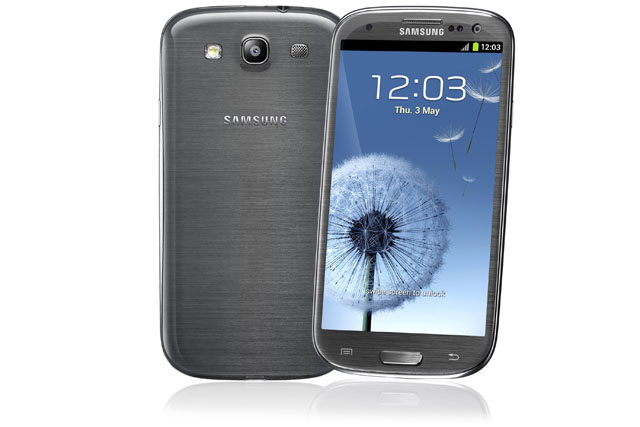
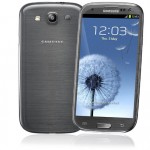
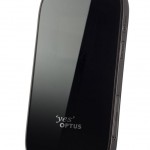
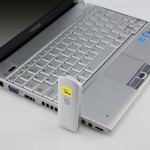


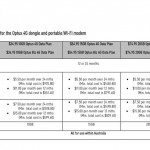
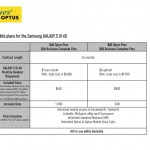
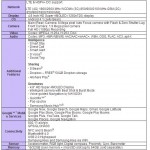
No news on what chipset its using
If it’s the Snapdragon abomination I’d avoid… If it’s a new 4G Exynos that might be interesting.
I have asked Samsung for info on this, but nothing has been forthcoming as yet.
And why is the Snapdragon S4 an abomination?
The first mobile SoC to be built using 28nm technology?
The first mobile SoC to use Qualcomm’s Krait architecture, which is far more higher performance than the ARM Cortex-A9 that the Exynos is based on.
Not to mention the integrated LTE 9 months before everyone else.
Renai, you are threading in dangerous waters calling the American SGSIII version’s chipset ‘dumbed down’. The Snapdragon S4 beats the Exynos quad in some benchmarks, and loses in others (like any other chipset) but it certainly is very a very capable one. Now if Sammy has managed to bolt on LTE to its own Exynos processor, I am sure they would love to use that and stop paying money to Qualcomm, but that certainly doesn’t make the S4 any less of a SoC than what Samsung itself produces.
Well for the Galaxy Note example, it was a massively poorer battery experience and performance was noticeably slower.
True “Abomination” is probably hyperbolic but I also get the distinct impression that when Samsung leverage in a non Samsung chip, its a bit of an afterthought and therefore a lesser product.
It’s fine in the One XL. Sure battery is ordinary, but that’s the LTE chip. Most benchmarks show it to be faster overall than the Tegra 3 quad that all other phones were coming out with for 3G versions.
I think ‘abomination’ is far from a fair call.
Battery on a mobile device like a smart phone is at _least_ 50% of the devices worth in my opinion.
The more powerful they become, the less useful or needed a laptop/PC is and if that’s going to be the case I want the battery to last all day with heavy use.
so far the snapdragon battery life on every device its been jammed into has been utter poo.
Reference?
All the industry benchmarks have shown the battery life to be as good if not better than the Tegra 3…. My XL gets about the same amount of battery life out of it as my Desire did and I use it more often AND it has a bigger, brighter screen AND I use it in 4G areas for small periods. And the battery is only some 25% larger. That seems pretty reasonable to me…
Most modern smartphones can’t do a heavy day of 3G usage, so I don’t think there will be anything that can do a whole day of heavy LTE use for a while, unfortunately.
‘although it is planning to start constructing 4G infrastructure locally from 2013.’
I don’t know whether this is nit-picking Renai, but perhaps ‘being switched on from 2013’ would be a better way of describing Vodafone’s position? After all, we already know they’re rolling out, right now, Huawei LTE equipment don’t we?….
In my experience, this is never as simple as “switching it on”.
I’m hoping this means the forthcoming Galaxy Note II will be 4G compatible from day one. It seems likely there will be one of those in our household in a few months but I won’t buy anything that doesn’t support 4G now.
Rush out and buy the 4G Samsung SIII? Telstra’s maps still don’t show coverage where I live and work (Brisbane-Gold Coast) and Optus has no chance of coverage until next year, and even then I’m not holding my breath. Maybe in 12 months this model will be cheap and I’ll actually be able to use it!
Comments are closed.